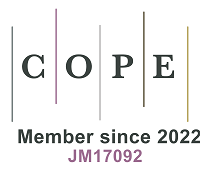REFERENCES
1. Chang CJ, Cheng SF, Chang PT, Tsai SW. Indoor air quality in hairdressing salons in Taipei. Indoor Air 2018;28:173-80.
2. Pierce JS, Abelmann A, Spicer LJ, et al. Characterization of formaldehyde exposure resulting from the use of four professional hair straightening products. J Occup Environ Hyg 2011;8:686-99.
3. Auguste D, Miller SL. Volatile organic compound emissions from heated synthetic hair: a pilot study. Environ Health Insights 2020;14:1178630219890876.
4. Lind ML, Boman A, Sollenberg J, Johnsson S, Hagelthorn G, Meding B. Occupational dermal exposure to permanent hair dyes among hairdressers. Ann Occup Hyg 2005;49:473-80.
5. Kezic S, Nunez R, Babić Ž, et al. Occupational exposure of hairdressers to airborne hazardous chemicals: a scoping review. Int J Environ Res Public Health 2022;19:4176.
6. Lin CC, Huang CN, Wang JD, et al. Exposure to multiple low-level chemicals in relation to reproductive hormones in premenopausal women involved in liquid crystal display manufacture. Int J Environ Res Public Health 2013;10:1406-17.
7. Cassidy-Bushrow AE, Burmeister C, Birbeck J, et al. Ambient BTEX exposure and mid-pregnancy inflammatory biomarkers in pregnant African American women. J Reprod Immunol 2021;145:103305.
8. Mendes A, Madureira J, Neves P, Carvalhais C, Laffon B, Teixeira JP. Chemical exposure and occupational symptoms among Portuguese hairdressers. J Toxicol Environ Health A 2011;74:993-1000.
9. Ma CM, Lin LY, Chen HW, Huang LC, Li JF, Chuang KJ. Volatile organic compounds exposure and cardiovascular effects in hair salons. Occup Med 2010;60:624-30.
10. Acheson ED, Barnes HR, Gardner MJ, Osmond C, Pannett B, Taylor CP. Formaldehyde process workers and lung cancer. Lancet 1984;1:1066-7.
11. Warden H, Richardson H, Richardson L, Siemiatycki J, Ho V. Associations between occupational exposure to benzene, toluene and xylene and risk of lung cancer in Montréal. Occup Environ Med 2018;75:696-702.
12. Hadei M, Hopke PK, Shahsavani A, et al. Indoor concentrations of VOCs in beauty salons; association with cosmetic practices and health risk assessment. J Occup Med Toxicol 2018;13:30.
13. Choi YH, Kim HJ, Sohn JR, Seo JH. Occupational exposure to VOCs and carbonyl compounds in beauty salons and health risks associated with it in South Korea. Ecotoxicol Environ Saf 2023;256:114873.
14. Aglan MA, Mansour GN. Hair straightening products and the risk of occupational formaldehyde exposure in hairstylists. Drug Chem Toxicol 2020;43:488-95.
15. Occupational Safety and Health Administration. Hair salons - Formaldehyde in your products. Available from: https://www.osha.gov/hair-salons/products. [Last accessed on 2 Jul 2024].
16. James-Todd T, Senie R, Terry MB. Racial/ethnic differences in hormonally-active hair product use: a plausible risk factor for health disparities. J Immigr Minor Health 2012;14:506-11.
17. Adewumi-Gunn T. Promoting safer cosmetics through comprehensive legislation. 2017. Available from: https://escholarship.org/uc/item/9jq5p3pv. [Last accessed on 2 Jul 2024].
18. Dodson RE, Cardona B, Zota AR, Robinson Flint J, Navarro S, Shamasunder B. Personal care product use among diverse women in California: taking stock study. J Expo Sci Environ Epidemiol 2021;31:487-502.
19. Preston EV, Chan M, Nozhenko K, et al. Socioeconomic and racial/ethnic differences in use of endocrine-disrupting chemical-associated personal care product categories among pregnant women. Environ Res 2021;198:111212.
20. Hollund BE, Moen BE. Chemical exposure in hairdresser salons: effect of local exhaust ventilation. Ann Occup Hyg 1998;42:277-82.
21. Baghani AN, Rostami R, Arfaeinia H, Hazrati S, Fazlzadeh M, Delikhoon M. BTEX in indoor air of beauty salons: risk assessment, levels and factors influencing their concentrations. Ecotoxicol Environ Saf 2018;159:102-8.
22. Ronda E, Hollund BE, Moen BE. Airborne exposure to chemical substances in hairdresser salons. Environ Monit Assess 2009;153:83-93.
23. Kaikiti C, Stylianou M, Agapiou A. TD-GC/MS analysis of indoor air pollutants (VOCs, PM) in hair salons. Chemosphere 2022;294:133691.
24. McCarthy K, McLaughlin D, Montgomery D, Munsell P, Schuster M, Wood M. “Keratin-based” hair smoothing products and the presence of formaldehyde. 2010. Available from: https://osha.oregon.gov/OSHAPubs/reports/keratin-based-hair-smoothing-report.pdf. [Last accessed on 2 Jul 2024].
25. Durgam S, Page E. Formaldehyde exposures during Brazilian blowout hair smoothing treatment at a hair salon - Ohio. 2011. Available from: https://www.cdc.gov/niosh/hhe/reports/pdfs/2011-0014-3147.pdf. [Last accessed on 2 Jul 2024].
26. Preston EV, Fruh V, Quinn MR, et al. Endocrine disrupting chemical-associated hair product use during pregnancy and gestational age at delivery: a pilot study. Environ Health 2021;20:86.
27. Louis LM, Kavi LK, Boyle M, et al. Biomonitoring of volatile organic compounds (VOCs) among hairdressers in salons primarily serving women of color: a pilot study. Environ Int 2021;154:106655.
28. Boyle MD, Kavi LK, Louis LM, et al. Occupational exposures to phthalates among Black and Latina U.S. hairdressers serving an ethnically diverse clientele: a pilot study. Environ Sci Technol 2021;55:8128-38.
29. Shao Y, Kavi L, Boyle M, et al. Real-time air monitoring of occupational exposures to particulate matter among hairdressers in Maryland: a pilot study. Indoor Air 2021;31:1144-53.
30. Newmeyer MN, Quirós-Alcalá L, Kavi LK, Louis LM, Prasse C. Implementing a suspect screening method to assess occupational chemical exposures among US-based hairdressers serving an ethnically diverse clientele: a pilot study. J Expo Sci Environ Epidemiol 2023;33:566-74.
31. Tsigonia A, Lagoudi A, Chandrinou S, Linos A, Evlogias N, Alexopoulos EC. Indoor air in beauty salons and occupational health exposure of cosmetologists to chemical substances. Int J Environ Res Public Health 2010;7:314-24.
32. Zamora ML, Rice J, Koehler K. One year evaluation of three low-cost PM2.5 monitors. Atmos Environ 2020;235:117615.
33. National Institute of Occupational Safety and Health. Hydrocarbons, aromatic: Method 1501. NIOSH Manual of Analytical Methods (NMAM), 4th edition. 2003. Available from: https://www.cdc.gov/niosh/docs/2003-154/pdfs/1501.pdf. [Last accessed on 2 Jul 2024].
34. National Library of Medicine. PubChem. Available from: https://pubchem.ncbi.nlm.nih.gov/. [Last accessed on 2 Jul 2024].
35. Agency for Toxic Substances and Disease Registry. Toxicological profile for 1,1-Dichloroethane. 2015. Available from: https://wwwn.cdc.gov/TSP/ToxProfiles/ToxProfiles.aspx?id=718&tid=129. [Last accessed on 2 Jul 2024].
36. Women’s Voices for the Earth. Beauty and its beast: Unmasking the Impacts of Toxic Chemicals on Salon Workers. 2014. Available from: https://womensvoices.org/wp-content/uploads/2014/11/Beauty-and-Its-Beast.pdf. [Last accessed on 2 Jul 2024].
37. EWG’s Skin Deep®. Cosmetics Database. Available from: https://www.ewg.org/skindeep/. [Last accessed on 2 Jul 2024].
38. CDC. NIOSH pocket guide to chemical hazards. Acetone. 2019. Available from: https://www.cdc.gov/niosh/npg/npgd0004.html. [Last accessed on 2 Jul 2024].
39. California Department of Public Health. California Safe Cosmetics Program (CSCP) Product Database. Available from: https://cscpsearch.cdph.ca.gov/search/publicsearch. [Last accessed on 2 Jul 2024].
40. Consumer Product Information Database. What’s in it: health effects of consumer products. Available from: https://www.whatsinproducts.com/pages/index/1. [Last accessed on 2 Jul 2024].
41. Agency for Toxic Substances and Disease Registry. ToxFAQsTM for toluene. 2017. Available from: https://wwwn.cdc.gov/TSP/ToxFAQs/ToxFAQsDetails.aspx?faqid=160&toxid=29. [Last accessed on 2 Jul 2024].
42. Agency for Toxic Substances and Disease Registry. Toxicological profile for chloroform. Available from: https://wwwn.cdc.gov/TSP/ToxProfiles/ToxProfiles.aspx?id=53&tid=16. [Last accessed on 2 Jul 2024].
43. Rodgman A, Perfetti TA. The chemical components of tobacco and tobacco smoke. 2nd edition. CRC Press; 2013.
44. National Toxicology Program. 14th report on carcinogens (RoC). Available from: https://www.comfortncolor.com/HTML/NewStyrene/Carcinogens/14th%20Report%20on%20Carcinogens%20(RoC).pdf. [Last accessed on 2 Jul 2024].
45. Boyle EB, Viet SM, Wright DJ, et al. Assessment of exposure to VOCs among pregnant women in the national children’s study. Int J Environ Res Public Health 2016;13:376.
46. Cosmetic Ingredient Review. CIR Reports. Available from: https://cir-reports.cir-safety.org/. [Last accessed on 2 Jul 2024].
47. Aviado DM. Methyl chloroform and trichloroethylene in the environment. 1st edition. CRC Press; 2018.
48. CDC. Occupational health guidelines for chemical hazards: methyl chloroform. 1988. Available from: https://www.cdc.gov/niosh/docs/81-123/default.html. [Last accessed on 2 Jul 2024].
49. Methyl chloroform (1,1,1-trichloroethane). 2000. Available from: https://www.epa.gov/sites/production/files/2016-09/documents/methyl-chloroform.pdf. [Last accessed on 2 Jul 2024].
50. U.S. Food & Drug Administration. Import alert 53-06. Available from: https://www.accessdata.fda.gov/cms_ia/importalert_130.html. [Last accessed on 2 Jul 2024].
51. Code of federal regulations. 21 CFR § 700.19 - Use of methylene chloride as an ingredient of cosmetic products. Available from: https://www.law.cornell.edu/cfr/text/21/700.19. [Last accessed on 2 Jul 2024].
52. 3: Final report on the safety assessment of methylene chloride. J Am Coll Toxicol 1988;7:741-835.
53. Agency for Toxic Substances and Disease Registry. Toxicological profile for methylene chloride. Available from: https://wwwn.cdc.gov/TSP/ToxProfiles/ToxProfiles.aspx?id=234&tid=42. [Last accessed on 2 Jul 2024].
54. Agency for Toxic Substances and Disease Registry. Toxicological profile for tetrachloroethylene (PERC). Available from: https://wwwn.cdc.gov/TSP/ToxProfiles/ToxProfiles.aspx?id=265&tid=48. [Last accessed on 2 Jul 2024].
55. Agency for Toxic Substances and Disease Registry. Toxicological profile for xylene. Available from: https://wwwn.cdc.gov/TSP/ToxProfiles/ToxProfiles.aspx?id=296&tid=53. [Last accessed on 2 Jul 2024].
56. Labrèche F, Forest J, Trottier M, Lalonde M, Simard R. Characterization of chemical exposures in hairdressing salons. Appl Occup Environ Hyg 2003;18:1014-21.
57. de Gennaro G, de Gennaro L, Mazzone A, Porcelli F, Tutino M. Indoor air quality in hair salons: screening of volatile organic compounds and indicators based on health risk assessment. Atmospheric Environment 2014;83:119-26.
58. Huynh T, Ramachandran G, Banerjee S, et al. Comparison of methods for analyzing left-censored occupational exposure data. Ann Occup Hyg 2014;58:1126-42.
59. ASHRAE. ANSI/ASHRAE addendum p to ANSI/ASHRAE standard 62.1-2013. Ventilation for acceptable indoor air quality. 2015. Available from: https://www.ashrae.org/file%20library/technical%20resources/standards%20and%20guidelines/standards%20addenda/62_1_2013_p_20150707.pdf. [Last accessed on 2 Jul 2024].
60. Senthong P, Wittayasilp S. Working conditions and health risk assessment in hair salons. Environ Health Insights 2021;15:11786302211026772.
61. Melymuk L, Bohlin P, Sáňka O, Pozo K, Klánová J. Current challenges in air sampling of semivolatile organic contaminants: sampling artifacts and their influence on data comparability. Environ Sci Technol 2014;48:14077-91.
62. Grešner P, Świercz R, Wąsowicz W, Gromadzińska J. Faster health deterioration among nail technicians occupationally exposed to low levels of volatile organic compounds. Int J Occup Med Environ Health 2017;30:469-83.
63. Gostner JM, Zeisler J, Alam MT, et al. Cellular reactions to long-term volatile organic compound (VOC) exposures. Sci Rep 2016;6:37842.
64. Moro AM, Brucker N, Charão M, et al. Evaluation of genotoxicity and oxidative damage in painters exposed to low levels of toluene. Mutat Res 2012;746:42-8.
65. Agency for Toxic Substances and Disease Registry. Benzene, toluene, ethylbenzene, and xylenes (BTEX). Available from: https://www.atsdr.cdc.gov/interactionprofiles/ip05.html. [Last accessed on 2 Jul 2024].
66. Occupational Health & Safety. Pieretti LF. Setting a higher standard: the limitations of regulatory limits. 2019. Available from: https://ohsonline.com/articles/2019/10/01/setting-a-higher-standard-the-limitations-of-regulatory-limits.aspx. [Last accessed on 2 Jul 2024].
67. Deveau M, Chen CP, Johanson G, et al. The Global landscape of occupational exposure limits - implementation of harmonization principles to guide limit selection. J Occup Environ Hyg 2015;12 Suppl 1:S127-44.
68. Silva E, Rajapakse N, Kortenkamp A. Something from “nothing” - eight weak estrogenic chemicals combined at concentrations below NOECs produce significant mixture effects. Environ Sci Technol 2002;36:1751-6.
69. Zota AR, Shamasunder B. The environmental injustice of beauty: framing chemical exposures from beauty products as a health disparities concern. Am J Obstet Gynecol 2017;217:418.e1-6.
70. Lothrop N, Sandoval F, Cortez I, et al. Studying full-shift inhalation exposures to volatile organic compounds (vocs) among latino workers in very small-sized beauty salons and auto repair shops. Front Public Health 2023;11:1300677.
71. Ricklund N, Bryngelsson IL, Hagberg J. Occupational exposure to volatile organic compounds (VOCs), including aldehydes for swedish hairdressers. Ann Work Expo Health 2023;67:366-78.
72. ASHRAE. ASHRAE 62.1-2019: Ventilation for acceptable indoor air quality (ANSI approved). 2019. Available from: https://store.accuristech.com/ashrae/standards/ashrae-62-1-2019?product_id=2088533. [Last accessed on 2 Jul 2024].
73. EWG. Big market for black cosmetics, but less-hazardous choices limited. 2016. Available from: https://www.ewg.org/research/big-market-black-cosmetics-less-hazardous-choices-limited. [Last accessed on 2 Jul 2024].







